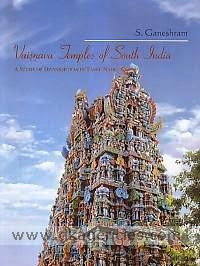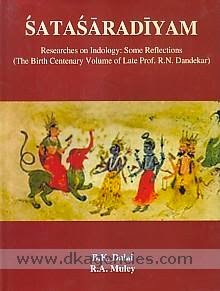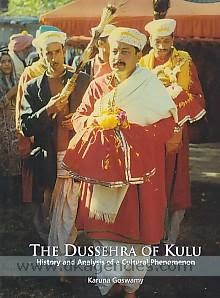Art, icon and architecture in South Asia essays in honour of Dr. Devangana Desai edited by Anila Verghese, Anna L. Dallapiccola New Delhi Aryan Books International, 2015
ISBN 9788173055331
DK-244943
http://www.dkagencies.com/doc/from/1063/to/1123/bkId/DK8263321716228836696803113771/details.html
Meant to felicitate an art historian of international repute: Dr Devangana Desai, this 2-volume festschrift carries latest research papers, covering some of the broad areas, which have figured among her lifelong research concerns. Written by eminent scholars from Germany, India, Singapore, UK, and USA, the 37 essays here been grouped in five thematically organized sections: Buddhist Monuments and Icons – Iconography, Narrative Sculpture and Images – Monuments (Architecture) – Painting – General Themes. Among other specific themes, the essays focus on the Ashokan Stupa at Sopara, Gandhara Art from the Hirayama Collection in Japan, Mathura ‘Personality vis-à-vis the Development of Narrative Art, the Woman and Dwarf Motive in Western Indian Sculpture, Temple Sculpture in Colonial Madurai, Revelations in Rock, Kachwaha Temples, Enigmatic Buddhist Monasteries and Temples in Central India, and Water Structures of Gujarat; besides studies of narratives in stone, yantras, iconography, calligraphy, terracottas, Khajuraho sculptures, Jaina cave temples, and paintings. The papers are lavishly illustrated with exquisite photographs.
ISBN 9788173055331
DK-244943
http://www.dkagencies.com/doc/from/1063/to/1123/bkId/DK8263321716228836696803113771/details.html
Meant to felicitate an art historian of international repute: Dr Devangana Desai, this 2-volume festschrift carries latest research papers, covering some of the broad areas, which have figured among her lifelong research concerns. Written by eminent scholars from Germany, India, Singapore, UK, and USA, the 37 essays here been grouped in five thematically organized sections: Buddhist Monuments and Icons – Iconography, Narrative Sculpture and Images – Monuments (Architecture) – Painting – General Themes. Among other specific themes, the essays focus on the Ashokan Stupa at Sopara, Gandhara Art from the Hirayama Collection in Japan, Mathura ‘Personality vis-à-vis the Development of Narrative Art, the Woman and Dwarf Motive in Western Indian Sculpture, Temple Sculpture in Colonial Madurai, Revelations in Rock, Kachwaha Temples, Enigmatic Buddhist Monasteries and Temples in Central India, and Water Structures of Gujarat; besides studies of narratives in stone, yantras, iconography, calligraphy, terracottas, Khajuraho sculptures, Jaina cave temples, and paintings. The papers are lavishly illustrated with exquisite photographs.


